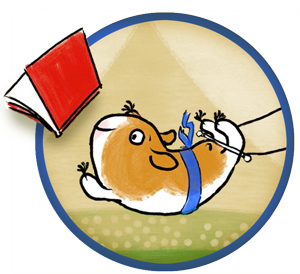GIF by Isabella Kung
If you read our last blog post, you know the Soaring ’20s Picture Book Debut crew loves critiques so much, we’re giving them away. Today, we offer tips on how to critique a picture book manuscript or dummy for a glimpse into what the 20+6 winners of our MEGA SOARING ’20s CRITIQUE GIVEAWAY can expect (and for some advice on how to help your own writing buddies take their manuscripts and dummies from good to great).
1. Get some background information.
“I usually like to find out first if there is something specific the author or illustrator is looking for in the critique—story, voice, pacing, etc. or the whole enchilada. I also like to know a little bit about their background (how long have they been writing?) and the MS or dummy background (how many versions have there been?).”
—Gregory Barrington, author/illustrator
COW BOY IS NOT A COWBOY (HarperCollins, Fall 2020)
2. Read once.
“For me, the first read is always about the high-level things: the concept, and the emotion or ‘heart’ of the manuscript. Is the concept unique and fresh enough to stand out in the market? What do I feel when I read the story?”
—Carrie Finison, author
DOZENS OF DOUGHNUTS (G.P. Putnam’s Sons, Summer 2020)
3. Read twice (out loud this time).
“Picture books are meant to be read out loud, and it’s crucial to get the music of the words right.”
—Rajani LaRocca, author
SEVEN GOLDEN RINGS (Lee & Low, Summer 2020)
4. Ask questions.
“Some questions I might ask are: Do I know the protagonist enough to root for her? Does she solve her own problem? Does she have agency? Does the story have focus? And, perhaps most importantly, does it have heart—am I connecting to it in a deeper way than just the storyline?”
—Mary Wagley Copp, author
WHEREVER I GO (Atheneum/Simon & Schuster, Spring 2020)
5. Read it again.
“Look for opportunities to strengthen characters, tighten the plot, and power up the word play.”
—Candy Wellins, author
SATURDAYS ARE FOR STELLA (Page Street Kids, Summer 2020)
6. GO BIG! And go small.
“I like to look at both the macro and micro level. I’ll check for big-picture issues like a strong theme and story arc and character development, as well as smaller (but still very important!) issues like sentence structure and word choice.”
—Melanie Ellsworth, author
CLARINET AND TRUMPET (Houghton Mifflin Harcourt, summer 2020)
HIP, HIP…BERET! (Houghton Mifflin Harcourt, 2020)
7. Allow the artist to find answers.
“I try to direct people back to their characters or other strong places to find answers to questions I might raise, instead of supplying the answers myself. I believe each artist has the answers in them already and within the work.”
—Sam Wedelich, author/illustrator
CHICKEN LITTLE: The Real and Totally True* Tale (Scholastic Press, spring 2020)
8. Make a sandwich.
“I like to use the not-so-secret recipe for a critique sandwich. It’s one even the most sensitive artists can stomach. Start with the bread—that’s the good stuff. What’s working? Where did you laugh or cry? Which characters did you fall in love with? Next, add protein. This is the part that makes the story stronger. Make suggestions. Ask questions. But don’t get carried away—a person’s mouth is only so big. Top the sandwich off with one more slice of bread. Serve.”
—Colleen Paeff, author
THE GREAT STINK: How Joseph Bazalgette Solved London’s Poop Pollution Problem (Margaret K. McElderry Books/Simon & Schuster, Summer 2020)
Go here to enter the MEGA SOARING ’20s CRITIQUE GIVEAWAY to win a picture book manuscript, dummy, or portfolio critique with one of these (and other) Soaring ’20s members. The contest runs through 11:59 p.m. September 15, 2019. Winners will be announced September 17!


